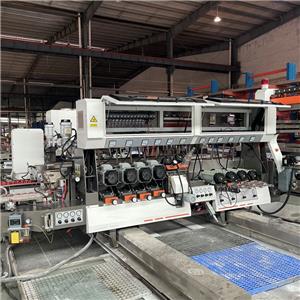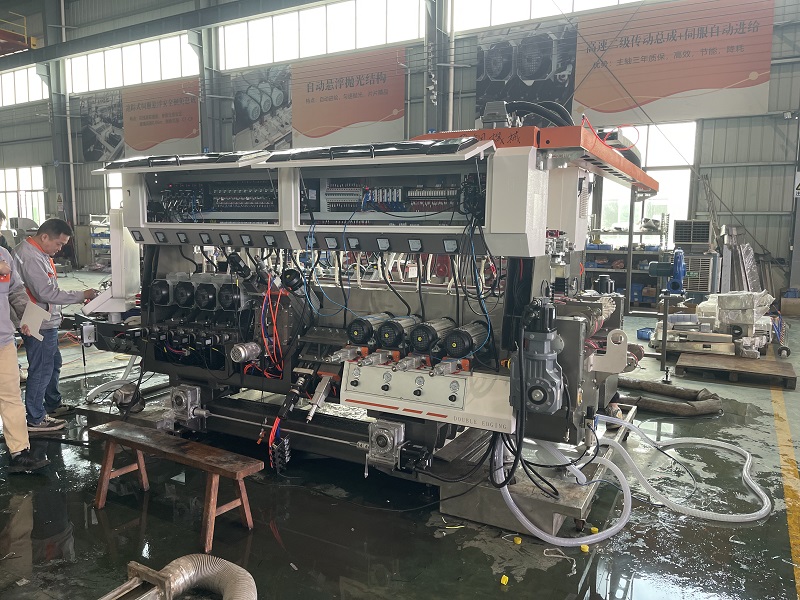In an industry where microns matter and finishes speak volumes, the strategic deployment of specialized glass processing machine technology separates market leaders from the competition. Modern fabrication demands more than basic cutting—it requires edge excellence achieved only through purpose-engineered glass grinding machine solutions. The evolution of the industrial glass edging machine represents a quantum leap in capability, transforming this critical phase from a production bottleneck into a competitive advantage.

The Precision Imperative
Manual edgework consistently struggles with three critical challenges: finish inconsistency, hidden microfractures, and unsustainable production speeds. A dedicated glass grinding machine conquers these limitations through engineered perfection. Today’s advanced systems perform integrated operations—aggressive material removal, micron-accurate profiling, scratch-free grinding, and optical-grade polishing—in a single automated sequence. Implementing a high-capacity glass edging machine typically reduces edge processing time by 60-75% while simultaneously elevating quality benchmarks beyond manual capabilities. This dual efficiency-quality breakthrough fundamentally reshapes project profitability calculations for fabricators.

Unmatched Material Versatility
The adaptability of contemporary glass processing machine technology remains its most underrated asset. A single robust glass grinding machine transitions seamlessly between:
Standard float glass and ultra-clear low-iron variants
Laminated safety glass configurations
Pre-tempered and heat-strengthened panels
Textured, patterned, and coated specialty glass
This flexibility proves indispensable for shops serving architectural glazing contractors, luxury interior specialists, and industrial clients. Whether producing kilometers of pristine straight edges for curtain walls or crafting intricate ogee profiles for designer furniture, a precision-engineered glass edging machine delivers consistent excellence. This core glass processing machine capability enables rapid response to diverse project requirements without retooling delays.
Engineering Breakthroughs
The modern glass grinding machine achieves its remarkable performance through multi-spindle architecture with specialized stations:
Coarse Grinding: Diamond-impregnated wheels rapidly establish edge geometry
Fine Grinding: Successively finer abrasives eliminate subsurface fractures
Polishing: Felt/polymer wheels with cerium oxide achieve optical clarity
Mitering: Angled spindles create perfect 45° joints
Operated through intuitive CNC interfaces, a sophisticated glass edging machine stores hundreds of edge profiles—from basic champfers to complex demi-bullnose designs—ensuring perfect replication across production runs. This automation embedded within the glass processing machine virtually eliminates human error while reducing dependence on scarce skilled labor.
Strategic Selection Criteria
Identifying the optimal glass processing machine requires evaluating five critical dimensions:
Thickness Spectrum: Verify the glass grinding machine accommodates 3mm display glass to 25mm structural laminates
Profile Capabilities: Ensure support for required edge types (flat polish, pencil, bevel, cove)
Automation Integration: Consider robotic loading compatibility with existing cutting systems
Footprint Efficiency: Evaluate space requirements against workshop layout
Throughput Alignment: Match glass edging machine cycle times to current and projected production volumes
Leading manufacturers now offer modular glass edging machine platforms scalable from compact straight-line units to 11-axis CNC centers processing complex 3D edges.
The Competitive Edge Imperative
For automotive glass suppliers, photovoltaic panel manufacturers, and aerospace component fabricators, the precision from a dedicated glass grinding machine transitions from advantage to necessity. Specifications demanding:
Sub-0.1mm dimensional tolerances
Ra < 0.01μm surface roughness
Zero micro-fracture edges
Optical distortion-free polishing
...are achievable only through advanced glass processing machine technology. The absence of microscopic defects ensured by professional-grade glass edging machine systems directly correlates with product longevity and safety certification compliance.
Transformation Economics
Integrating a high-performance glass grinding machine delivers compounding returns:
Labor Optimization: 60-70% reduction in manual grinding hours
Quality Premium: Ability to command 15-25% price increases for precision edges
Waste Reduction: 8-12% material cost savings through breakage minimization
Capacity Liberation: 3-5x throughput increase versus manual methods
The consistency engineered into contemporary glass processing machine systems builds irreplaceable brand equity—flawless edges become tangible evidence of quality commitment.
The Future-Proof Investment
As architectural trends embrace exposed edges and industrial applications demand tighter tolerances, capabilities determine market positioning. The technology within a modern glass edging machine represents more than equipment—it embodies a strategic commitment to precision manufacturing. Fabricators leveraging next-generation glass grinding machine solutions don't just meet specifications; they define new industry standards while future-proofing operations against commoditization pressures.
Forward-focused manufacturers recognize that mastery begins at the edge. In markets where perfection is measured in light reflections and tactile smoothness, your glass processing machine capabilities determine your competitive horizon. Discover how the latest evolution in glass edging machine technology can elevate your craft, expand your profitable service offerings, and secure your reputation as a precision leader—one impeccable edge at a time.

